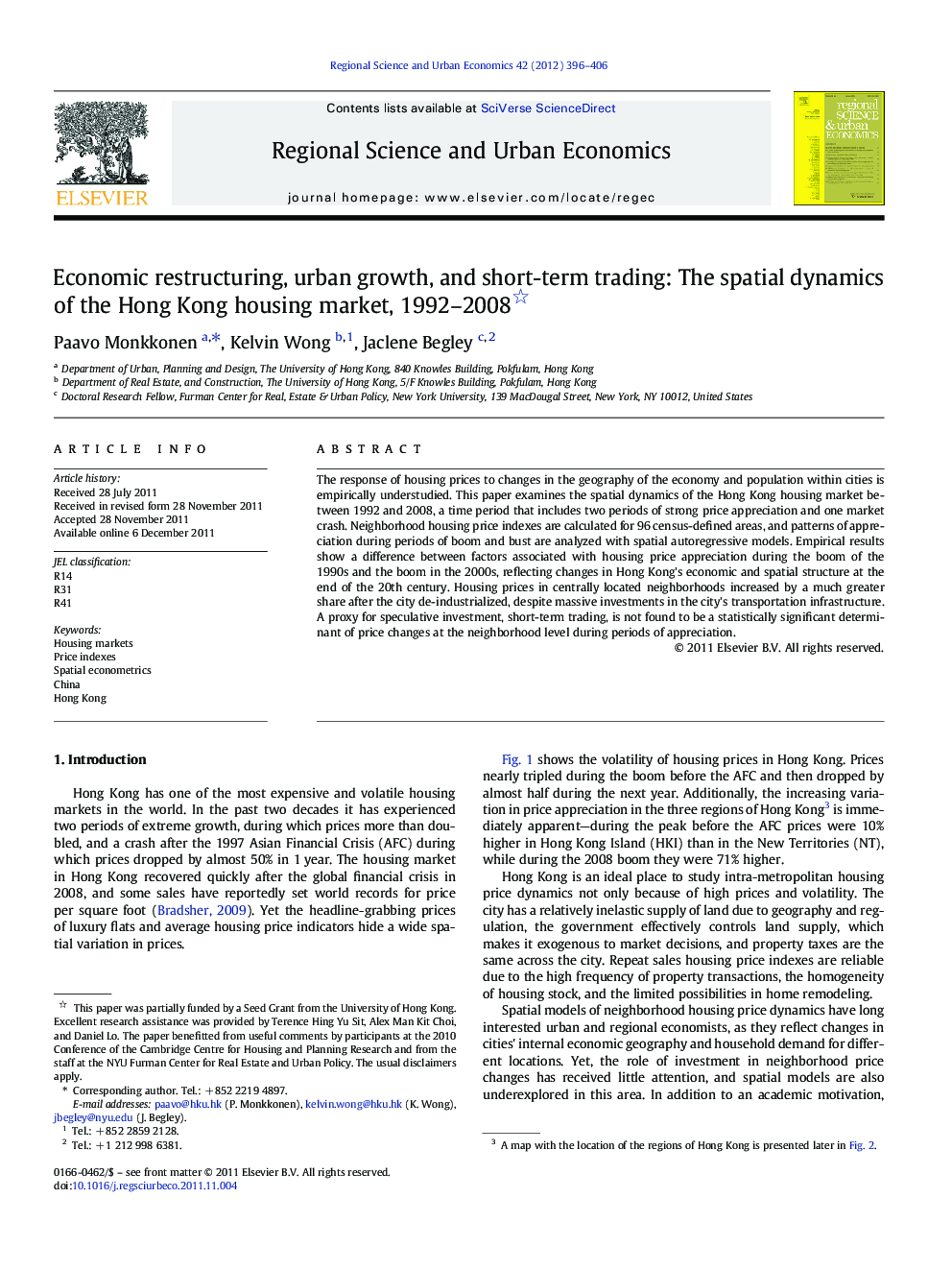| Article ID | Journal | Published Year | Pages | File Type |
|---|---|---|---|---|
| 983754 | Regional Science and Urban Economics | 2012 | 11 Pages |
The response of housing prices to changes in the geography of the economy and population within cities is empirically understudied. This paper examines the spatial dynamics of the Hong Kong housing market between 1992 and 2008, a time period that includes two periods of strong price appreciation and one market crash. Neighborhood housing price indexes are calculated for 96 census-defined areas, and patterns of appreciation during periods of boom and bust are analyzed with spatial autoregressive models. Empirical results show a difference between factors associated with housing price appreciation during the boom of the 1990s and the boom in the 2000s, reflecting changes in Hong Kong's economic and spatial structure at the end of the 20th century. Housing prices in centrally located neighborhoods increased by a much greater share after the city de-industrialized, despite massive investments in the city's transportation infrastructure. A proxy for speculative investment, short-term trading, is not found to be a statistically significant determinant of price changes at the neighborhood level during periods of appreciation.
► We create housing price indexes for neighborhoods in Hong Kong from 1992 to 2008. ► We test determinants of price changes with a spatial instrumental variable model. ► Determinants differ substantially during the two periods of price growth. ► Initial price explains two thirds of the variation in change during the 1990s. ► Access to the city center is the main driver of price increase during the 2000s.
